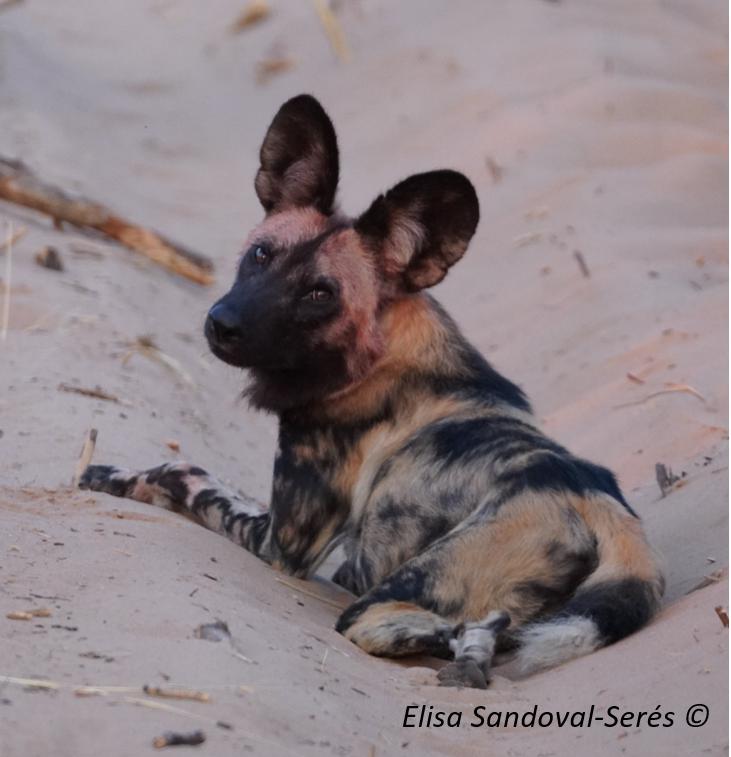María Elisa Sandoval Serés
Other projects
30 Jun 2020
Impact of Interspecific Competition on African Wild Dogs (Lycaon pictus) in an Ecosystem with Artificial Perennial Water Provision
This is the continuation of the research to determine how African wild dogs cope with the competition with larger carnivores (lions and spotted hyaenas) in a system with artificial water provision.
Interspecific competition affects African wild dogs through exclusion from prey rich areas, kleptoparasitism, mortality, and exposure to human dominated landscapes (Creel 2001; Van der Meer et al. 2013). Competition is likely to increase when water is scarce through the aggregation of prey and predators around waterholes.

One member of Somamalisa Pack resting after a kill in Hwange National Park. © Elisa Sandoval-Serés, Painted Dog Conservation
Thus, our particular objectives are:
a) To assess the level of food competition between African wild dogs and larger carnivores.
b) To determine African wild dogs’ den behaviour: how den site selection factors, babysitting time, and foraging time away from the den influence predation risk and herewith pup recruitment and survival.
c) To determine the level of kleptoparasitism risk of African wild dogs’ kills from lions and spotted hyaenas depending on different distances from waterholes; and assess the use of waterholes of predators and prey.
d) To assess whether African wild dogs use proactive or reactive (after a previous risk assessment) coping behaviours to avoid interspecific competition with lions and spotted hyenas, what behaviours they use and whether these behaviours are affected by the type of competing species and seasonality.
e) To recommend water management strategies to help African wild dogs’ conservation within a semi-arid ecosystem with artificial water provision.
The study area is in Hwange National Park (HNP), Zimbabwe. HNP is a man managed national park with no perennial natural water, as such during the dry season the only water available for wildlife is through the artificially pumped waterholes. For my second fieldwork season, we will follow radio-collared wild dogs, set camera traps at artificially pumped waterholes and monitor dens. I will also use existing historic predators’ data from WildCRU’s Hwange Lion Project and from Painted Dog Conservation.
All this will give insight in how different waterhole densities affect competition of wild dogs with larger carnivores. The main conservation goal is to provide advice on water management strategies which support African wild dog conservation and can be implemented by the Zimbabwe Parks and Wildlife Management Authority and other stakeholders engaged with water management in HNP. Water management is a crucial factor in the management of other wildlife areas, this work performed in Zimbabwe can therefore contribute to the overarching conservation work in other (transfrontier conservation) areas in Africa.
Header: Somamalisa Pack playing after a kill in Hwange National Park. © Elisa Sandoval-Serés, Painted Dog Conservation.